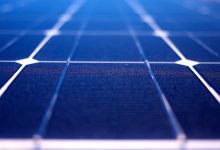Researchers at MIT and Princeton Universities have successfully demonstrated a new method for silicon solar cell design that could push efficiencies not just to record highs, but beyond what were theoretically thought possible.
Conventional silicon solar cells have a theorectical maximum efficiency of around 29 per cent, as there is a limit to how much sunlight can be converted into useful electricity within a silicon solar cell (dubbed the Shockley–Queisser limit).
While the physics of how solar cells work is undoubtedly complex (Albert Einstein notably won the 1921 Nobel Prize in Physics for his explanation of the photoelectric effect), the basic concept is that particles of sunlight (photons) are used to knock “excited” electrons out of silicon atoms, and in turn are used to produce an electric current.
Many commercially available cells achieve efficiencies in the order of 20-25 per cent, with higher efficiencies being a trade-off against the overall cost of the cell.
But in a finding that may allow solar cells to surge beyond efficiencies that were previously thought possible, researchers at MIT have discovered a way of extracting even more energy out of the light that hits a solar cell, believing they can take silicon solar cell efficiencies to as high as 35 per cent.
Traditionally, photons have only been able to transfer their energy to a single “excited” electron as they pass through conventional silicon solar cells.
However, some parts of the light spectrum, notably blue and green light, has enough energy to excite multiple electrons.
Generally this excess energy is converted into waste heat, and researchers have been searching for way to tap into this extra energy, seeing the potential to boost solar cell efficiencies.
In new research published in the journal Nature this week, researchers at MIT and Princeton Universities have demonstrated a method of doing exactly that, using photons (the light particles) to “excite” multiple electrons.
The researchers effectively coated silicon cells with a layer of molecules called tetracene that could absorb the energy from sunlight and splitting it in two.

The process required the production of a layer of a material called hafnium oxynitride, that was only a few atoms thick, which allow for the extra energy stored in the molecules to be transferred into the silicon wafer to produce electricity.
“It turns out this tiny, tiny strip of material at the interface between these two systems ended up defining everything. It’s why other researchers couldn’t get this process to work, and why we finally did.” Van Voorhis said.
By “exciting” multiple electrons, solar cells could produce more electric current using the same amount of light, boosting the effiency of silicon solar cells by as much as 20 per cent.
The concept had been theorised as far back as the 1970s, with MIT professor of chemistry Troy Van Voorhis having participated in the original proposal at the time, and now contributing to the research that was successful in demonstrating the effect in a functional solar cell.
The research was lead by Australian researcher and professor of electrical engineering and computer science at MIT Marc Baldo. Before heading to the US to undertake research related to solar cell designs, Baldo completed a bachelor of engineering form the University of Sydney.
Putting the theory into practise “only took 40 years,” Van Voorhis joked.
The proof of concept could lead to dramatic increases in the efficiencies of silicon solar cells, pushing beyond the 29% theoretical efficiency limit of current cells, to as high as 35%.
A wide range of research is currently underway for taking the efficiency of solar cells beyond 30%, with most techniques using a combination of silicon and organic solar cells “stacked” upon each other to maximise the amount of sunlight converted to electricity.
But the MIT/Princeton research requires just a single silicon cell, which are most commonly used for commercially available solar cells.
“They’re building one cell on top of another. Fundamentally, we’re making one cell — we’re kind of turbocharging the silicon cell. We’re adding more current into the silicon, as opposed to making two cells,” Baldo said.
Further research will be required before the new techniques would be deployed into commercially available solar panels.
“We still need to optimize the silicon cells for this process,” Baldo added.







